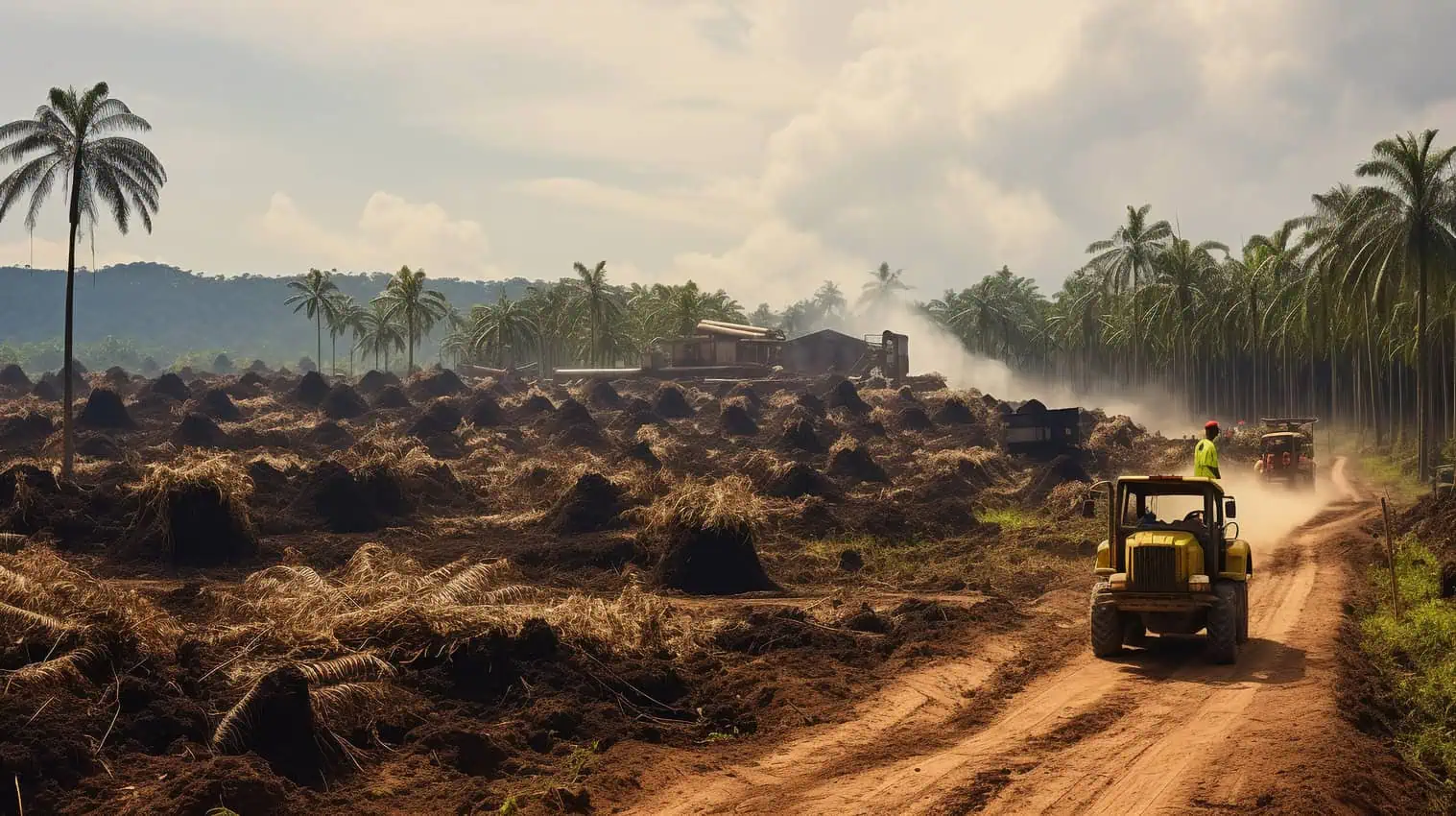Welcome to a comprehensive exploration of the intricate dynamics behind the volatile pricing trends of palm oil from Malaysia (MY) and Indonesia (ID), the world’s leading producers. In this detailed analysis, we delve into specific periods of price changes from March 2019 to February 2024, uncovering the factors influencing these shifts and their impacts on the palm oil sector.
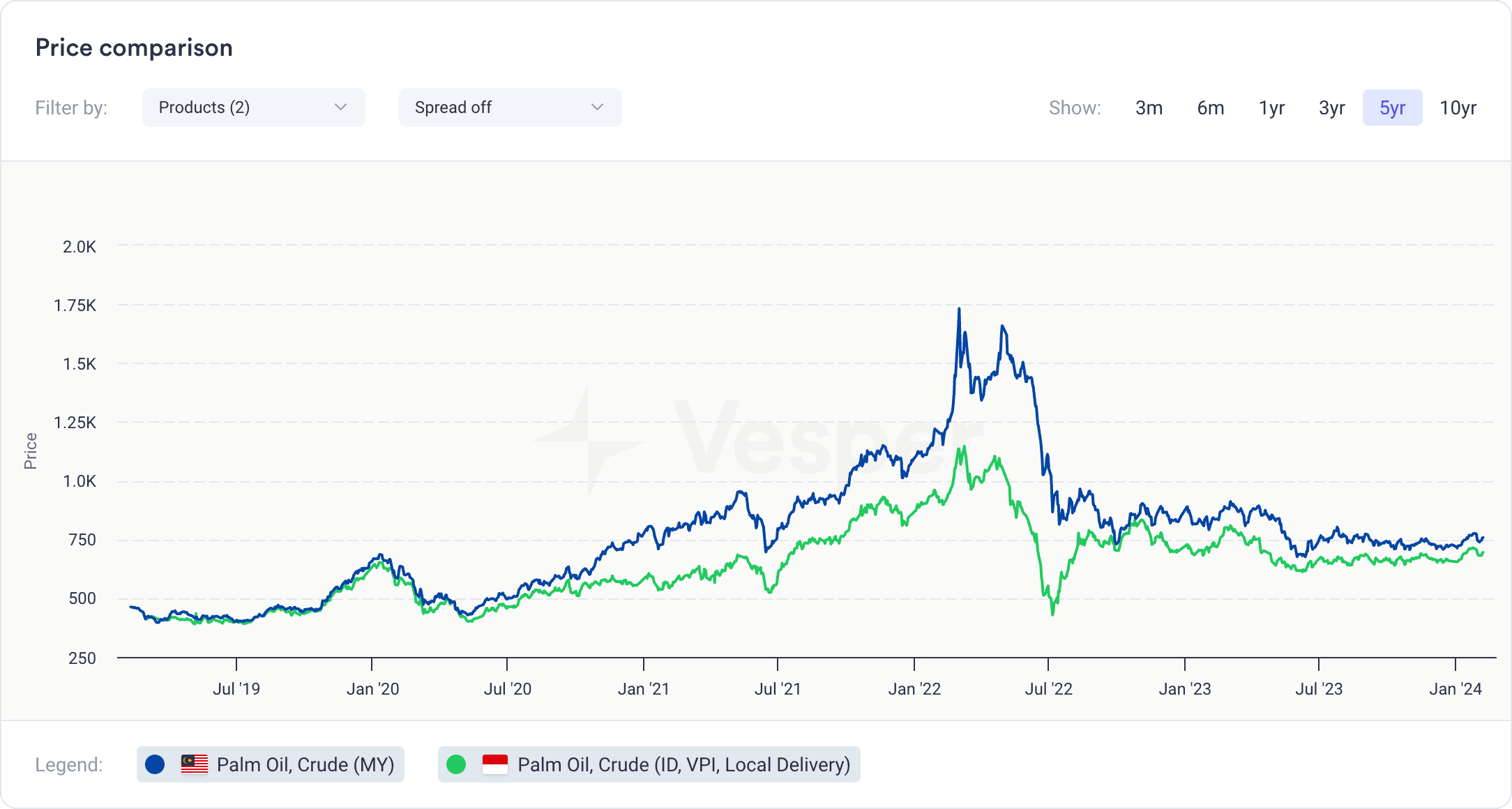
Table of content:
1. The Palm Oil Pricing Saga: An Overview
2. The Early Fluctuations: March 2019 to May 2020
3. The Recovery and Subsequent Peaks: September 2020 to April 2022
4. The Downward Spiral and Stabilization: April 2022 to February 2024
5. Conclusion: Navigating the Future of Palm Oil Markets
Introduction
Palm oil, derived from the fruit of oil palm trees, plays a pivotal role in the global edible oil market, finding applications in food products, cosmetics, and biofuels. Over the past five years, palm oil prices have witnessed significant fluctuations, shaped by various factors including environmental policies, market demand, geopolitical tensions, and global events such as the COVID-19 pandemic.
1. The Palm Oil Pricing Saga: An Overview
1.1 The Palm Oil Pricing Saga: An Overview
Palm oil, extracted from the oil palm fruit, is renowned for its versatility and widespread usage across industries. Its importance stems from its economic value, environmental impact, and social implications. Its versatility extends to being used as a cooking oil, an ingredient in processed foods, and as a feedstock for biofuel production.
1.2 The Significance of Palm Oil Prices: Economic, Environmental, and Social Considerations
The pricing of palm oil is of paramount importance due to its economic significance for producers and consumers, its environmental footprint, and its social implications for communities reliant on palm oil production. Fluctuations in palm oil prices can have profound effects on the livelihoods of smallholder farmers, the economies of producing countries, and global food security.
1.3 The Rollercoaster Ride: Overview of Price Fluctuations from 2019 to 2024
The journey of palm oil prices from 2019 to 2024 has been marked by significant highs and lows, reflecting the dynamic nature of commodity markets and the influence of external factors. Factors such as changes in global demand, weather-related supply disruptions, trade policies, and geopolitical tensions have all contributed to the volatility in palm oil prices during this period.
2. The Early Fluctuations: March 2019 to May 2020
2.1 March 2019: Setting the Stage
In March 2019, palm oil prices stood at 409 EUR/MT in Malaysia and 462 EUR/MT in Indonesia, laying the groundwork for a period of volatility driven by various factors. These prices reflected a relatively stable period before significant fluctuations began to occur.
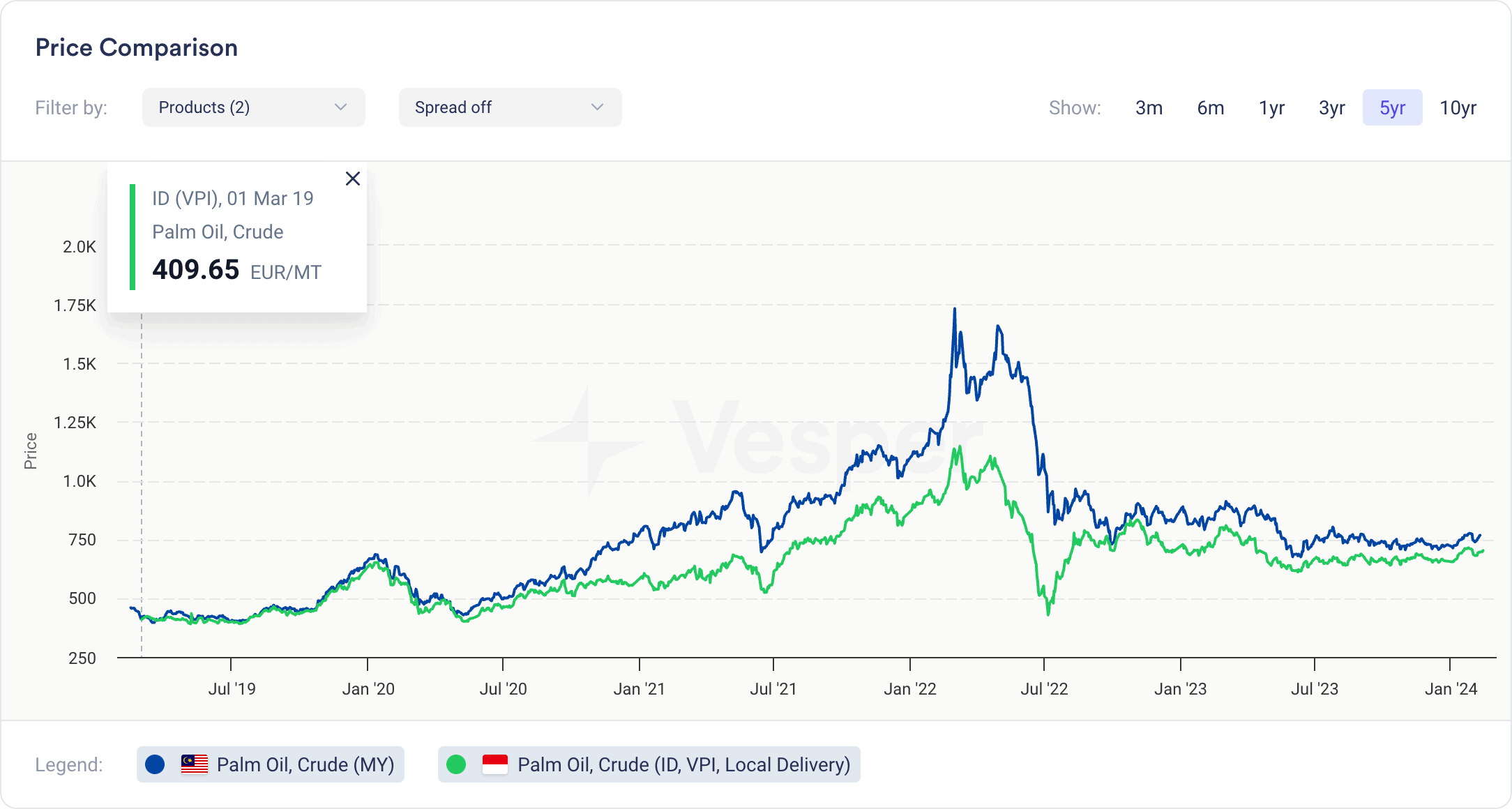
2.2 January 2020: Reaching a Peak
By January 2020, prices surged to 686 EUR/MT in Malaysia and 651 EUR/MT in Indonesia, propelled by increased demand for biofuels, supply disruptions, and speculative trading activities. The peak in January 2020 marked a period of unprecedented price growth for palm oil, driven primarily by rising demand from key importing countries and concerns over potential supply constraints.
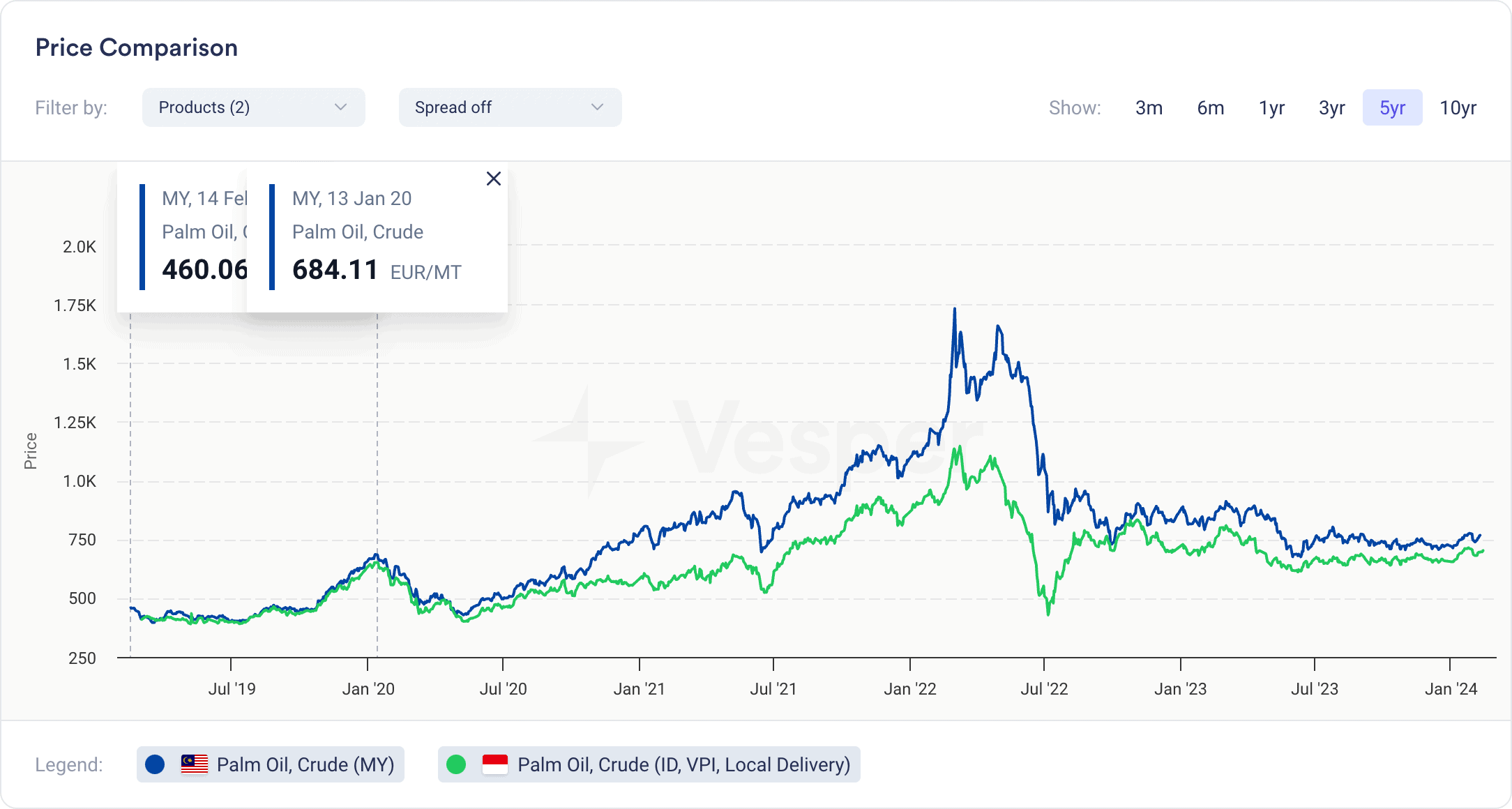
2.3 March to May 2020: The Impact of the COVID-19 Pandemic
The onset of the COVID-19 pandemic in early 2020 led to a sharp decline in palm oil prices, attributed to lockdown measures, reduced demand for edible oils and biofuels, and global market disruptions. As countries implemented lockdowns and travel restrictions to contain the spread of the virus, demand for palm oil products, particularly biofuels, plummeted, leading to an oversupply situation in the market.
3. The Recovery and Subsequent Peaks: September 2020 to April 2022
3.1 September 2020 Onwards: Divergent Recovery Paths
From September 2020, Malaysian palm oil prices began to recover at a faster pace than Indonesian prices, driven by factors such as export policies and domestic market dynamics. While both countries experienced an initial rebound in prices as global demand started to recover, Malaysian prices outpaced Indonesian prices due to differences in production capacity and export strategies.
3.2 June to August 2021: Continued Volatility
The period from June to August 2021 saw fluctuating prices, reflecting the ongoing challenges in balancing supply and demand amidst varying pandemic responses and global economic recovery efforts. Despite efforts to stabilize the market, palm oil prices remained volatile, driven by uncertainties surrounding the pace of economic recovery and geopolitical tensions.
3.3 March 2022: An Unprecedented Spike
In March 2022, palm oil prices experienced an unprecedented spike, with Malaysian prices soaring over 1,600 EUR/MT and Indonesian prices reaching 1,120 EUR/MT, driven by labor shortages, logistical bottlenecks, and increased demand. The extreme peak in prices caught many market participants by surprise and underscored the vulnerability of global supply chains to disruptions.
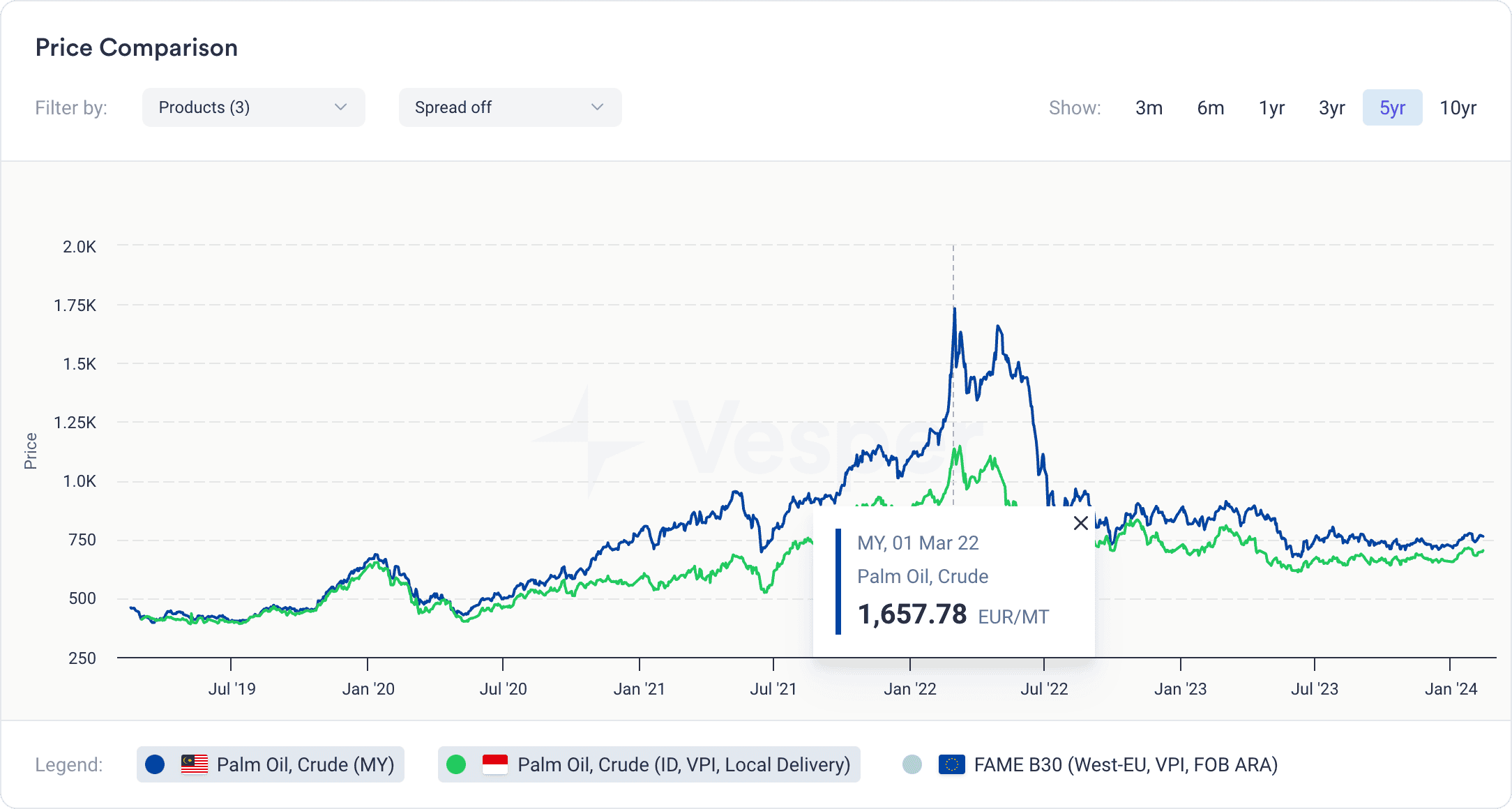
4. The Downward Spiral and Stabilization: April 2022 to February 2024
4.1 April to September 2022: The “Massive Dump”
Following the highs of early 2022, the palm oil market experienced a “massive dump,” with prices plummeting to 734 EUR/MT in Malaysia and 441 EUR/MT in Indonesia around July-September 2022, attributed to improved supply conditions and easing logistical challenges. As supply chains recovered from earlier disruptions and global demand moderated, palm oil prices entered a period of correction and consolidation.
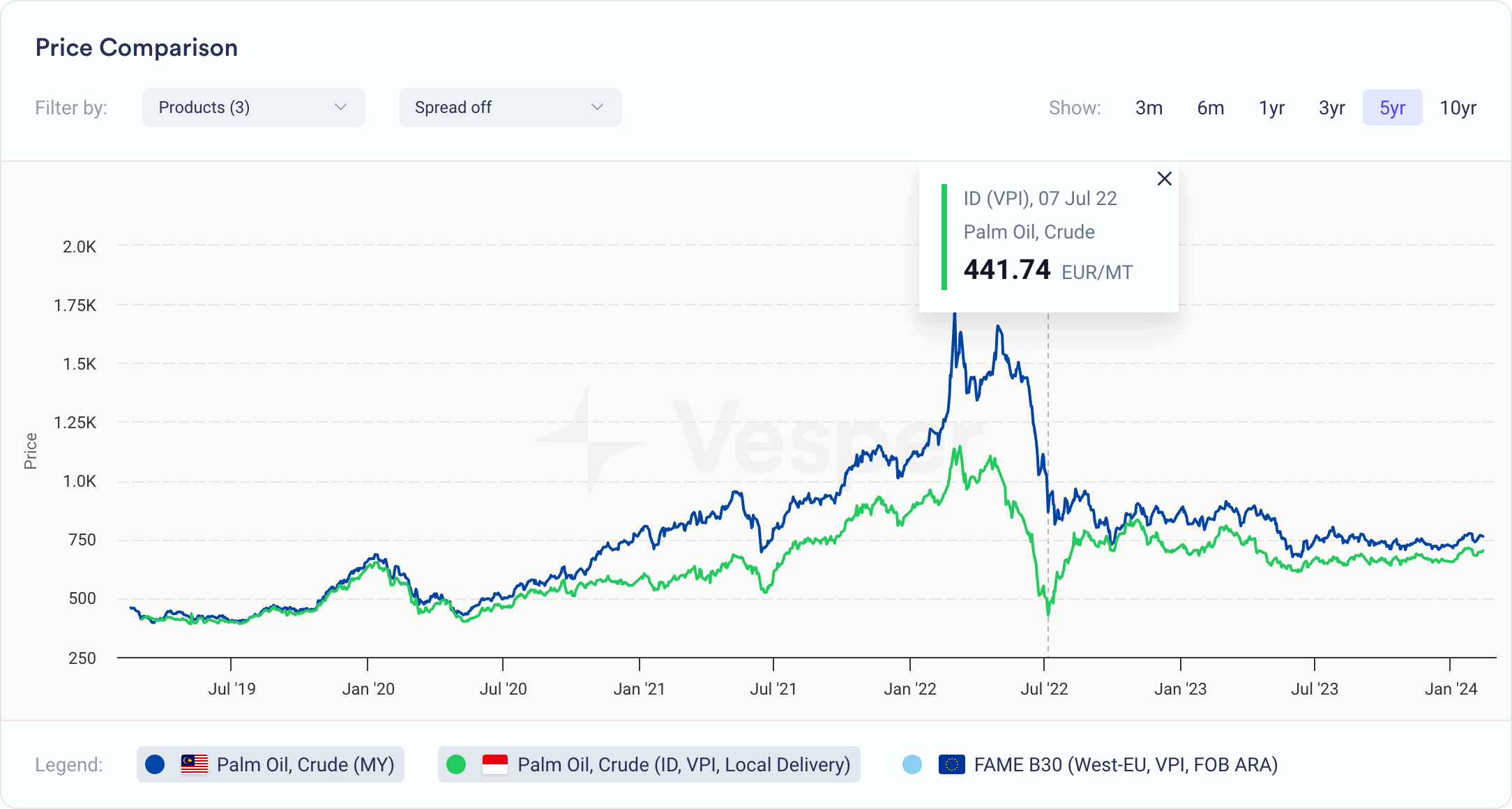
4.2 September 2022 Onwards: Narrowing Price Gap and Stabilization
In the aftermath, Indonesian palm oil prices recovered more robustly, narrowing the gap with Malaysian prices and stabilizing around 700 EUR/MT by September 2022, reflecting a new equilibrium in the market. The convergence of prices between Malaysia and Indonesia signaled a return to stability in the palm oil market, as supply and demand dynamics gradually rebalanced.
5. Conclusion: Navigating the Future of Palm Oil Markets
5.1 Lessons Learned from the Rollercoaster Journey
The volatility in palm oil prices from 2019 to 2024 underscores the need for stakeholders to remain vigilant and adaptable in navigating the uncertainties of the market, with lessons learned shaping future strategies. Market participants must anticipate and respond effectively to changing market conditions, regulatory developments, and geopolitical risks to mitigate the impact of price fluctuations on their businesses.
5.2 Strategies for Stakeholders in the Palm Oil Industry
As the palm oil industry moves forward, stakeholders must adopt forward-thinking strategies informed by market insights and a holistic understanding of the factors influencing pricing dynamics. Producers, traders, and consumers alike must prioritize sustainability, resilience, and innovation to thrive in an increasingly complex and interconnected global market.
By examining the detailed analysis presented here, stakeholders can gain valuable insights into the complex dynamics driving palm oil prices and make informed decisions to navigate the future of the industry effectively. Whether adapting to evolving consumer preferences, mitigating climate-related risks, or capitalizing on emerging market opportunities, proactive and strategic action will be essential for success in the palm oil market in the years to come.
